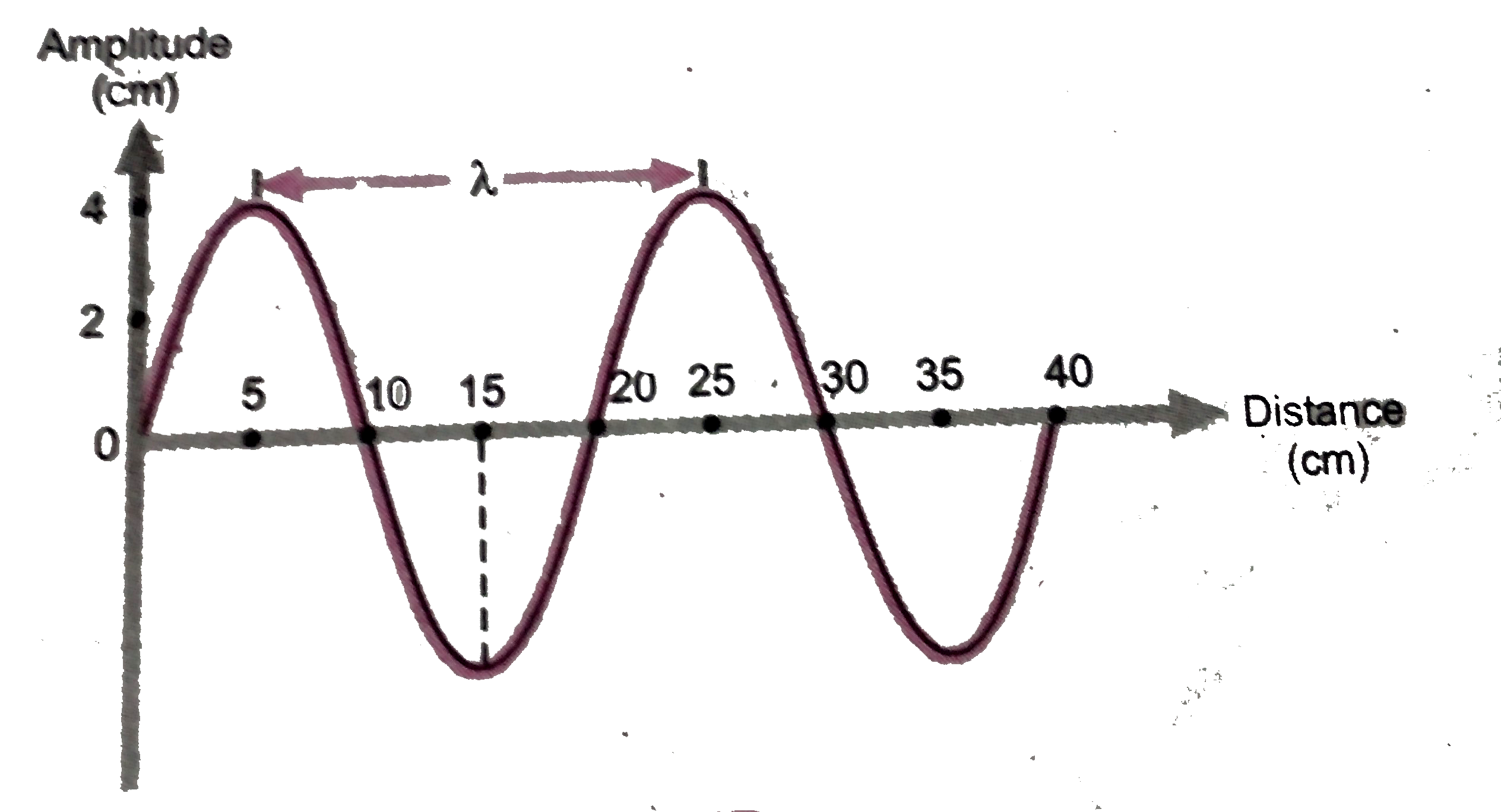Consider the wave y=(5mm)sin[(1cm−1)x−(60s−1)t]. Find the amplitude, b. the wave number, c the wavelength d. the frequency e. the time period and f. the wave velocity.Solution in Tamil
Comparing the given equation with equation (15.15, we find
a amplitude A=5mm
b. Wave number k=1cm−1
c. wavelength λ=2πk=2πcm
d=equencyv=ω2π602πHz
=30πHz
e. time period T=1v=π30s
f.wavevelocityu=vλ=60cms−1
Topper's Solved these Questions
- BOOK - HC VERMACHAPTER - WAVE MOTION AND WAVES ON A STRINGEXERCISE - Worked out Examples10videos
WAVE MOTION AND WAVES ON A STRING
- BOOK - HC VERMACHAPTER - WAVE MOTION AND WAVES ON A STRINGEXERCISE - Question for short Answer8videos
WAVE MOTION AND WAVES ON A STRING
- BOOK - HC VERMACHAPTER - THE FORCESEXERCISE - Exercises12videos
THE FORCES
- BOOK - HC VERMACHAPTER - WORK AND ENERGYEXERCISE - Exercises64videos
WORK AND ENERGY
Similar Questions
The displacement of a particle of a string carrying a travelling wave is given by y=(3.0cm)sin6.28(0.50x−50t), where x is in centimetre and t in second Find (a) the amplitude, (b) the wavelength, (c ) the frequency and (d) the speed of the wave.
02:05View SolutionYou are walking along a seashore and a mild wind is blowing. Is the motion of air a wave motion ?
03:14View SolutionThe gravitational force acting on a particle of 1 g due to a similar particle is equal to 6.67×10−17N. Calculate the separation between the particles.
02:34View SolutionThe mass of a cyclist together with the bicycle is 90 kg. Calculate the work done by cyclist if the speed increases from 6km/h to 12 km/h.
01:33View SolutionConsider the wave y=(5mm)sin[1cm−1x−(60s−1)t]. Find (a) the ampitude, (b) the angular wave number, ( c ) the wavelength, (d) the frequency, (e) the time period and (f) the wave velocity.
04:40View Solutionshows a snapshot of a wave-form of frequency 50Hz. For this wave motion, find
(a) wavelength
(b) amplitude
( c) velocity.
 .02:49View Solution
.02:49View SolutionIn the given progressive wave y=5sin (100pit-0.4pix) where y and x are in m, t in s, what is the (a) amplitude (b) wavelength (c) frequency (d) wave velocity (e) particle velocity amplitude.
03:05View SolutionConsider the wave y=(10mm)sin[(5πcm−1)x−(60πs−1)t+π4]. Find (a) the amplitude (b) the wave number (c) the wavelength (d) the frequency f the time period and (f) the wave velcity (g) phase constant of SHM of particle at x=0.
03:30View SolutionThe equation of a progressive wave is y= 1.5sin(328t-1.27x) . Where y and x are in cm and t is in second. Calcualte the amplitude, frequency, time period and wavelength of the wave.
01:14View Solutionएक डोरी पर जाती ज्यातरंग (since wave) का समीकरण है
y=(5mm)cos[(1cm−1)x−(60s−1)t].
ज्ञात करें (a) कणों का आयाम, (b) तरंगदैर्ध्य , (c)आवृत्ति, (d) आवर्तकाल , (e )तरंग की चाल02:40View Solutionएक प्रगामी तरंग का समीकरण y=0.5sin2π(t−0.005x) है , जहां y व् x मीटर तथा t सेकण्ड में दिये गये हैं। तरंग की आवृत्ति, आयाम, तरंगदैर्घ वेग ज्ञात कीजिए।
03:59View SolutionA progressive wave is represented by an equation y=5sin(80πt−0.5πx), where x, y are in 'm' and 't' in 's'. Find (a) amplitude (b)wavelength (c ) frequency (d) velocity of the wave.
04:53View SolutionThe product of which of the following is equal to the velocity of light Wavelength and wave number Wavelength and frequency Frequency and wave number Wavelength and amplitude
05:37View SolutionA wave travelling along a string is given by y(x,t)=20sin2π(t−0.003x) x, y are in cm and t is in seconds.
Find the amplitude, frequency, wavelength and velocity of the wave.02:39View SolutionIn the given progressive wave y=5sin (100pit-0.4pix) where y and x are in m, t in s, what is the (a) amplitude (b) wavelength (c) frequency (d) wave velocity (e) particle velocity amplitude.
01:52View SolutionFor a wave described by y=0.5sin(x−60t)cm, find (i) amplitude (ii) wave-vector (iii) wavelength (iv) angular frequency and frequency (v) periodic time (vi) speed of wave.
03:35View Solution

